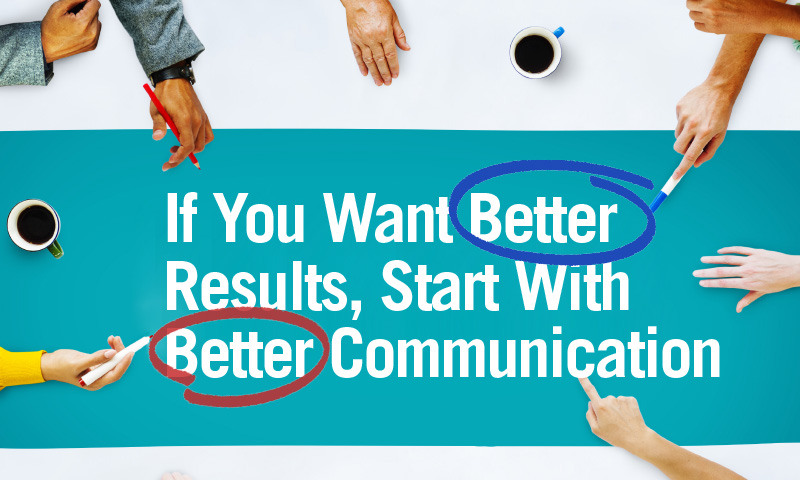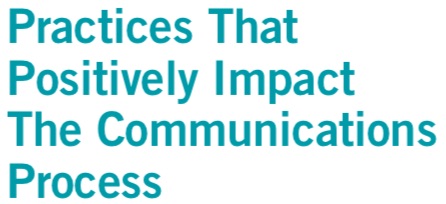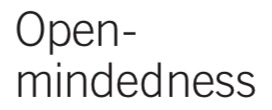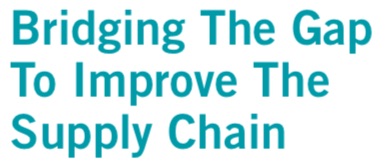Sales: If You Want Better Results, Start With Better Communication

Rawpixel / Shutterstock.com.
While perusing my RSS feeds the other morning, I stumbled on a most appropriate quote, one that will set the tone for this article. It comes from one of my mentors, Simon Sinek.
“Any worthwhile conversation starts with listening!”
Communication. It takes on various forms—written, verbal and non-verbal. It has, throughout history, moved mountains and opened amazing breakthroughs in technology, but the lack of communication has led to great disappointments. We need it, we depend on it and it is a skill that needs to be practiced, honed and practiced again and again.
![]()
I have a unique perspective on this issue by being actively involved in this industry for nearly 40 years. I have been a salesperson for a couple of companies, owned my own distributor company, been a partner and CEO in two supplier companies and have worked with multiple large distributors and suppliers as a marketing and business consultant. While I’ve not seen it all, I’ve seen plenty.
One of the biggest challenges I have seen and continue to see is a major lack of communication on all sides. No one side is to blame, and all would do well to reflect, think and alter the way we communicate. Solid, straightforward communication can solve a world of issues and make all things run much more smoothly. I have found this to be the case many times over, and the beauty of solid communication is that it flows over into personal relationships as well as business relationships.
––––––––––––––––––––––––––––––––––––––––––––––––––––––––––––––––––––––––––
![]()
What causes poor communication? Is it preventable? Is it easy to fix? These are all great questions, and questions that should be answered before one can move ahead.
Poor communication comes from people making assumptions, feeling the need to get their point across and wanting to be heard, not being openminded, failing to actively listen, feeling a lack of empowerment and not being self-accountable. Each of these points is avoidable, and the first step is identifying the issue.
––––––––––––––––––––––––––––––––––––––––––––––––––––––––––––––––––––––––––

Begin by answering these questions:
![]()
Ultimately, we are all serving the end customer. Every touchpoint, from the beginning to the end, can either positively or negatively affect the outcome. Distributors, do you understand the challenges suppliers are going through? Do you ask? Suppliers, do you understand the issues and perils distributors are really working through every day? Do you ask?
Distributors, in many cases, will take weeks and sometimes months to secure a client. They then relinquish the relationship to a supplier, trusting the supplier to do his or her part to ensure a successful outcome. That is a big responsibility; suppliers shouldn’t take it lightly.

Most businesses do not set joint expectations through the supply chain. Everyone should know their respective roles and what is expected from them. This goes for the entire supply chain. Supplier to distributor, distributor to client and back again. Everything should be spelled out, and I do not believe in today’s world you should rely on people to read everything. Recently, I went in for a dental procedure. Before I left, the doctor had a staff member explain, in detail, everything I needed to know so I could make an informed decision: the procedure, timelines, payment milestones, projected recovery time and potential issues that could arise. After leaving, I knew what to expect because they were thorough with their communication.
![]()
When I worked for a supplier, I realized our company was not for everyone, but it was right for many. The same principle applied when I owned my marketing company. Not all clients were a fit for a variety of reasons. Some did not appreciate our value as they are always looking for the cheapest price, were late payers, shopped our ideas, or were not respectful, loyal or open-minded. Over time, we made it a practice to target the right prospect and then interview the company to ensure a good fit. Believe me, we turned more potential clients away than we kept. Finding your ideal partner is a key component to having an open and communicative relationship.
![]()
It is true that everyone is busy, but you should never be too busy to ask questions, to understand and to ensure clarity. A fuzzy, ambiguous understanding fouls communication flow. Lack of clarity and assuming certain things further muddies the water. The power of asking good questions is a skill everyone needs to work on. Questions are never stupid; questions bring clarity and insight, and help light the path to understanding.

You may or may not have worked for a company where empowerment stays at the top. When that happens, nothing moves and there is zero progress because every decision is micro-managed from the top-down. Many who have experienced this firsthand would tell you it is stifling. Lack of empowerment shouts lack of trust. What you are saying is not good enough, in fact, you are not good enough. This creates angst and ill will.
Several years ago, I met a gentleman, Dana Montenegro, at one of my speaking engagements in the Caribbean. We hit it off rather nicely and after my presentation we had a lengthy sidebar chat. Dana had formally worked in a high-level marketing role for a large beverage distributor in the islands. He told me the story of how the company CEO encouraged failure—seems weird, right? But the explanation that followed was brilliant. Once of his co-workers totally failed with a major account. I do not remember the details, but I do remember him saying the CEO told the story in front of the whole company and proceeded to praise the guy because he took a risk, he tried but he failed. They were able to coach him, give him feedback and sent him off to try again. Imagine how that young man felt? It was extremely easy for him to take the constructive criticism and work even harder because he knew his boss had his back.
Some of the most talented people fail. Michael Jordan, who I feel was the greatest player ever, said, “I fail every day of my life, and that’s what makes me great.” Understand you make mistakes, own them, learn from them and if you are the boss, empower your team to go out there and keep learning.
––––––––––––––––––––––––––––––––––––––––––––––––––––––––––––––––––––––––––
![]()
![]()
There are two types of listening: active and passive. Without writing one more word, you know the difference because you have experienced both. A passive listener is not focused; this type of listener wanders and gets distracted. An active listener, on the other hand, looks at you when you speak, is not multi-tasking, seeks clarity, asks questions and never assumes. Be an active listener and communication changes dramatically.
![]()
Ambiguity is the biggest deal-breaker. We “Type A” personalities tend to rush through things. We know it, we understand what we want and, in all fairness, we expect people to figure it out. This is especially true with written correspondence. Our industry is heavily laden with details, and half-hearted correspondence creates delays, issues, mistakes and, in many cases, these missteps are expensive. Take the time to clearly articulate what you need. I find when communicating with someone, especially when there is detailed information, it’s best to bullet-point the information in an email. This creates a checklist of sorts and is much easier to ascertain what I am trying to convey.
![]()
When dealing with sensitive issues, having respect and empathy make a potentially tough situation easier to manage. If you need to reprimand someone, do it quickly and in private. Don’t let things fester or linger. Also, make sure you have a full grasp of the situation prior to sounding off. The ready, shoot, aim approach is least effective. When you need to deliver unwelcome news to a client, realize they need solutions, so go in armed with a couple of viable suggestions. Listen (really listen) to their response, hear what they are saying and let them know you hear them and understand.
![]()
Feedback is synonymous with accountability. It is easy to point fingers at others but taking a different approach may serve you better. I’ve found that, in most situations, looking inward first, asking myself questions about how I could have managed that differently, smooths over many issues and I eventually work out the issue.
I always ask: What could have I done differently? How could I have altered my approach or my questioning? Was I thorough? Did I assume anything? Was I clear? Most times the fault lies with me. Correct the problem, then go back to the person, own the situation and learn and move forward. As author Ken Blanchard said, “Feedback is the breakfast of champions.”
![]()
To make the most of a bad situation, take the emotion out of the equation. Develop a filter and do not take it personally. I realize that is easy to say, but when communication is emotionally charged, the outcome is rarely favorable. A former CEO I once worked with said his grandmother told him to count to four after someone speaks before responding. One, you’ll realize they are finished with their thoughts and two, you can digest what they said before your answer. This is one of the most difficult things for people to master. However, when you are aware of it, you can accomplish anything.

When you need to say something to someone, take a moment to think about the best method to communicate your message. In this fast-moving world of ours, I believe we rely on email and the various social channels too much. Some people are eloquent writers, but others are not, and too often the message can be misconstrued using these channels. Too often, things become misinterpreted or taken out of context, and the communication link becomes broken. Decide on the best channel; maybe picking up the phone or a face-to-face interaction is much more appropriate.
––––––––––––––––––––––––––––––––––––––––––––––––––––––––––––––––––––––––––



Be open to all possibilities, hold yourself accountable, and be willing to take positive feedback and turn that into a real learning lesson.
![]()
If you come at communication for the purpose of getting things done quickly and efficiently, remarkable things can happen. On the other hand, insipid, lackadaisical behavior does not foster effective communication.
![]()
Smile. Even on the phone, people can tell if you are smiling—it just comes through in your voice. I heard a story once where a call center manager put mirrors on everyone’s computer monitors with the word “SMILE” on the mirror. Productivity increased and callers made positive comments about the difference. Smiling makes a significant difference; it is one of the best forms of nonverbal communication.
![]()
The Japanese practice of Kaizen translates to “making better.” Former NFL referee Jim Tunney spoke at The PPAI Expo many years ago and shared this quote, “If it ain’t broke, break it and make it better.” Kaizen uses the same philosophy. This does not mean you need to dismantle your entire operation, but look at all the procedures and processes in your business—especially internal and external communication with others—and see where you can you make improvements. Even little improvements can make a big difference.
––––––––––––––––––––––––––––––––––––––––––––––––––––––––––––––––––––––––––

Here are a few more points to consider to improve communication all around:
- Deliver good news, and especially bad news, timely.
- Conduct surveys and offer rewards for responses.
- Leverage your community.
- Be fair, loyal and accountable.
- Become a true partner, not a vendor.
- Know the other person, their role and what their experience is.
- Have an open-door policy.
- Have an in-house training program.
- Determine the best communication channel for everyone. People work and react differently.
- Acknowledge and take advantage of your strengths.
––––––––––––––––––––––––––––––––––––––––––––––––––––––––––––––––––––––––––
![]()
We have a great industry and this industry, like others, is reliant on details and getting them right. Do your best to improve communications with yourself first, then within your organizations. Ask questions and understand your partners. This industry has been my life for 40 years and I love it, but I realized early on that people have choices. Suppliers, distributors and our ultimate end-user clients all have choices. To ensure they choose you, make every communication positive, friendly and memorable. If we all do this, imagine what our industry would look like.
In the words of the well-known motivational speaker, Les Brown, “Your ability to communicate is an important tool in your pursuit of your goals, whether it is with your family, your co-workers or your clients and customers.”
I wish you continued good selling, an open mind and the willingness to listen. Keep smiling and make the most of every communication.
––––––––––––––––––––––––––––––––––––––––––––––––––––––––––––––––––––––––––
Cliff Quicksell, Jr., MAS+, president of Cliff Quicksell Associates, has been an active industry volunteer serving on various PPAI committees, as a speaker and facilitator at PPAI and ASI shows, and as a member of PPAI’s Ambassadors Speakers Bureau for more than 15 years. He has also served five terms as the education chairperson for Chesapeake Promotional Products Association and is currently board president.
Quicksell has also been a speaker, trainer and international consultant to companies, associations and international business groups for more than 34 years and is the recipient of numerous awards including 30 PPAI Pyramid Awards and is a five-time winner of the Printing Industry PSDA’s Peak Award for creativity and the CPPA Creativity PEAKE Award. He was PPAI’s Ambassador Speaker of the Year for six consecutive years and, in 1997, was the inaugural recipient of PPAI’s Distinguished Service Award. Counselor magazine named Quicksell one of the Top 50 Most Influential People in the promotional products Industry.
He writes two weekly blogs, “Jumpstart Monday” and “30 Seconds to Greatness.” Reach him at cliff@quicksellspeaks.com and www.quicksellspeaks.com.

